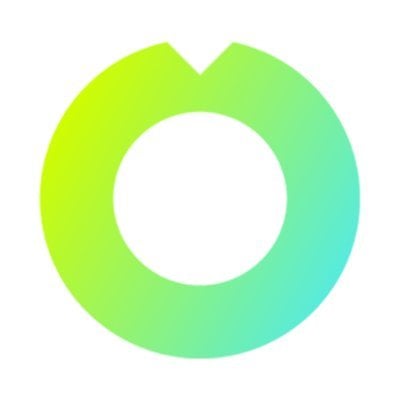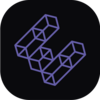| Job Position | Company | Posted | Location | Salary | Tags |
|---|---|---|---|---|---|
Cabbage | Remote | $18k - $36k | |||
Paypal | San Jose, CA, United States | $91k - $115k | |||
Tomnext | London, United Kingdom | $91k - $108k | |||
Ante Labs | Remote |
| |||
| Learn job-ready web3 skills on your schedule with 1-on-1 support & get a job, or your money back. | | by Metana Bootcamp Info | |||
Bitgo | Remote | $150k - $170k | |||
Ether.fi | New York, NY, United States | $100k - $140k | |||
Bitpanda | Remote | $98k - $109k | |||
Reservoir | New York, NY, United States | $140k - $160k | |||
Coinbase | Remote | $244k | |||
Zscaler | Remote |
| |||
Genies | Remote |
| |||
Copperco | London, United Kingdom | $86k - $117k | |||
Robinhood | Remote | $81k - $84k | |||
Busha | Lagos, Nigeria | $105k - $110k | |||
Bitpanda | Remote hybrid model (60-Work From Anywhere) | $98k - $112k |
Location : Remote
About the Company:
Stader Labs is on a mission to bring sustainable staking yields from digital assets to 1Bn+ users. Stader aims to be the distribution layer of staking while building protocols and products which enhance the security, decentralization, liquidity, governance of some of the major DPoS blockchain networks like Ethereum.
Cabbage is Stader Labs’ deep dive into memecoin discovery and trading—powered by AI, backed by risk mitigation, and fueled by rapid growth plans that span chains, devices, and asset classes. It blends speculative trading with tooling historically reserved for institutional DeFi.
Job Summary:
As a Product Designer at Stader, you will be responsible for designing and improving user experiences across our products. You will work closely with cross-functional teams, including product managers, engineers, and other designers, to create intuitive and engaging designs that meet user needs and business goals.
Responsibilities :
- User Research & Analysis: Conduct user research to understand user needs, behaviors, and pain points. Analyze data and feedback to inform design decisions.
- Design Creation: Develop wireframes, prototypes, and high-fidelity mockups for new and existing products. Ensure designs are user-centered, aesthetically pleasing, and aligned with our brand.
- Collaborate: Work with product managers and engineers to translate business requirements and user feedback into functional and visually appealing design solutions.
- Usability Testing: Conduct usability testing to validate design concepts and iterate based on user feedback. Identify areas for improvement and implement changes.
- Design Systems: Contribute to and maintain design systems and >
- Market Trends: Stay updated on industry trends, tools, and technologies. Apply best practices and innovative approaches to enhance the design process.
Qualifications:
- 3-5 years of experience as a Product Designer or in a similar role. Proven portfolio showcasing your design work, including wireframes, prototypes, and finished products.
- Proficiency in design tools such as Adobe Creative Suite, Sketch, Figma, or similar. Strong understanding of user-centered design principles, typography, color theory, and layout.
- Strong creative, design and communication skills
- Portfolio of work
Bonus Points:
- Best - From blockchain/crypto or similarly related companies and projects.
- Good to have - Experience building institutional products.
What does a product designer do?
A product designer is responsible for creating and designing the physical and visual aspects of a product, with the aim of enhancing its functionality, usability, and aesthetics
This involves a broad range of tasks, such as researching and analyzing customer needs, designing user interfaces, creating sketches and prototypes, testing and refining designs, and collaborating with cross-functional teams to ensure the final product meets the intended user needs and business goals
A product designer must have a deep understanding of design principles, materials, manufacturing processes, and technological advancements in order to create products that are both innovative and functional
They must also have excellent communication skills, as they work closely with engineers, marketing teams, and other stakeholders to ensure that the product is developed on time, within budget, and meets the desired quality standards
Product designers work in a variety of industries, such as consumer electronics, furniture, automotive, fashion, and healthcare, to name a few
They may work for large corporations, small businesses, or as freelance designers, and often collaborate with other designers, engineers, and manufacturers to bring their designs to life
In web3, a product designer is responsible for designing and creating decentralized applications (dApps) and other products that leverage blockchain technology, smart contracts, and decentralized networks
This involves understanding the unique technical and functional requirements of web3 products, as well as the principles of decentralization, transparency, and user ownership
Web3 product designers need to be familiar with blockchain technology, smart contract programming languages, and decentralized networks, in order to design products that can operate effectively in a decentralized environment
They need to be able to work with developers and other stakeholders to ensure that the product is designed in a way that maximizes user control and ownership, while minimizing the potential for fraud or malicious activity
Web3 product designers may work on a range of products, such as decentralized finance (DeFi) platforms, non-fungible token (NFT) marketplaces, decentralized social networks, and more
They may also work closely with blockchain developers, economists, and other specialists to create products that are both innovative and practical, while maintaining a strong focus on user experience.



